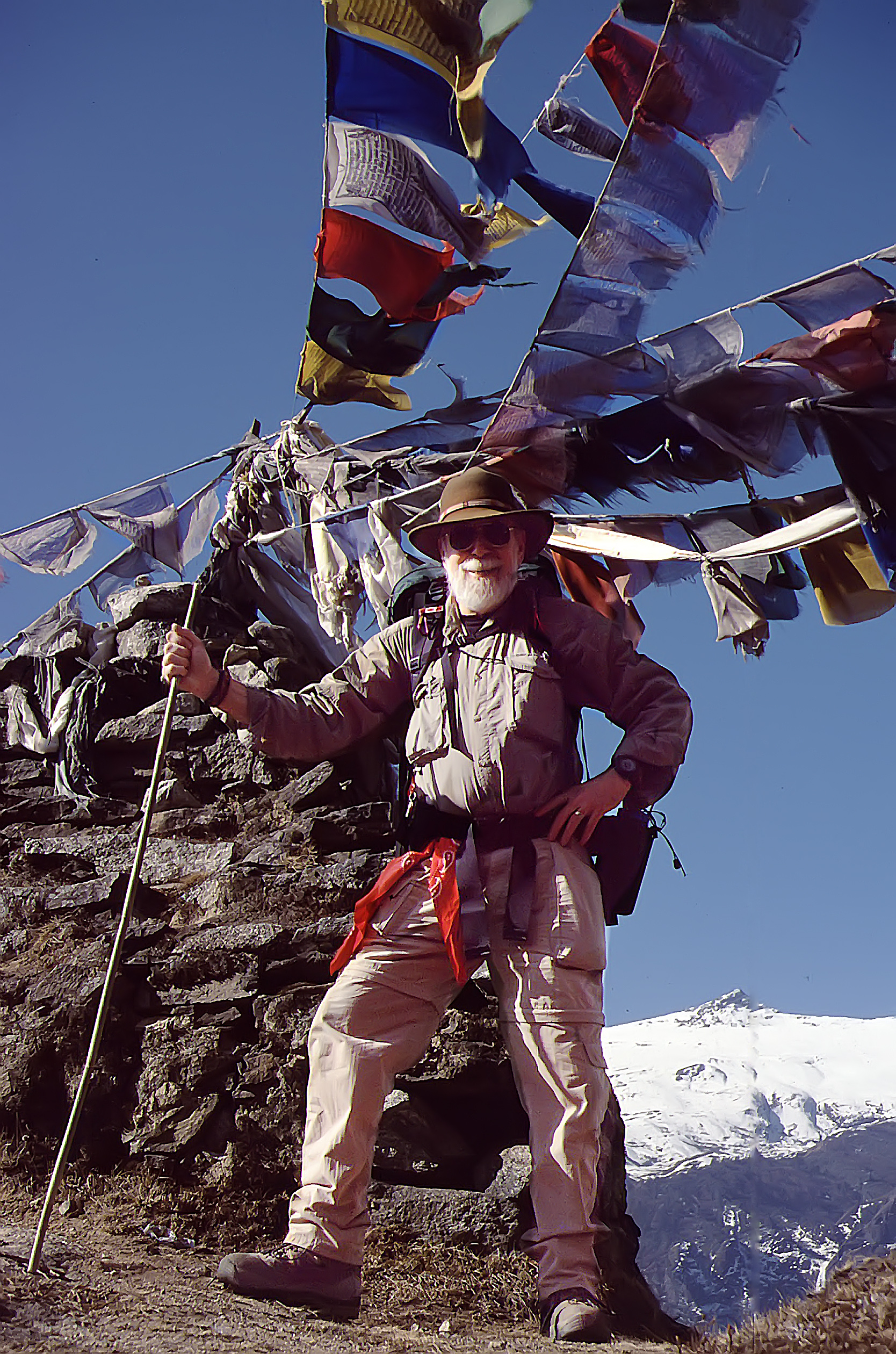
David Baine remembers climbing to the summit of a mountain called Kala Patthar overlooking base camp as one of the highlights of his life. (Photo supplied)
David Baine knows something about remaining active in his golden years.
The retired University of Alberta, Faculty of Education professor and clinical psychologist completed a trek to Mount Everest base camp at 65, an age where many of his colleagues have difficulty summiting their front steps.
And he credits physiotherapist Ian Hallworth with helping him get there.
Baine, now 81, got the opportunity to hike to Everest when he was 65. With the trip planned and the wheels in motion, his enthusiasm was cut short when he injured both of his knees practicing martial arts.
"I remember saying, 'I really don't think I can go.' My knees are pretty bad."
That's when Baine decided to go see Hallworth at the University of Alberta's Glen Sather Sports Medicine Clinic.
"Over the years, Ian had repaired my elbows and shoulders," remembers Baine. "And he said, 'let's see what we can do with those knees.' He convinced me not to cancel the trek."
"As a clinician, I did a lot of diagnostic work with families and individuals. I tried not only to do a thorough assessment, but also to make sure the clients I worked with understood the remedies we wanted them to try and that they were actually able to do them. And that's what I see with Ian," Baine explains. "He does excellent diagnostic work. He takes his time, he's methodical, he tests things out to make sure his assessment is valid. He designs a remedial strategy, demonstrates the strategy and then verifies that you're actually doing it properly."
The combination of treatment and exercises Hallworth prescribed allowed Baine to recover and enjoy the journey to base camp without issue. Along the way, they maneouvred narrow paths atop steep cliffs and made way for oncoming big-horn yaks, eventually reaching an altitude of 5,600 metres.
Baine remembers climbing to the summit of a mountain called Kala Patthar overlooking base camp as one of the highlights of his life.
"It was pretty arduous and somedays I'd look back along where we had hiked and I would be astonished to see what we had done."
For Baine, staying active through injuries and advancing age comes down to applying clinical ideas in his daily life. That means strengthening his knees through a series of prescribed physiotherapeutic exercises that he continues to this day.
"I worked in labour for a few years before I started my PhD and I've seen a lot of misuse of people's bodies. I think a lot of problems could be avoided with proper body management and education," he says. "I've been delighted with the treatment I've received at the Glen Sather Clinic because it focuses on body mechanics and building up muscular strength, balance and coordination."
For anyone dealing with a sports-limiting injury, Baine says physiotherapy can make a huge difference, with a caveat.
"Don't expect instant results. Do expect that you're going to have to put in effort for a period of time to remedy an injury. A big part of recovery is following through with the therapy, returning to the physiotherapist for reassessment and fine-tuning and continuing this process until recovery."
"I'm 81 and I really appreciate the benefits of good physical maintenance. Ian Hallworth has made a significant contribution to my quality of life."